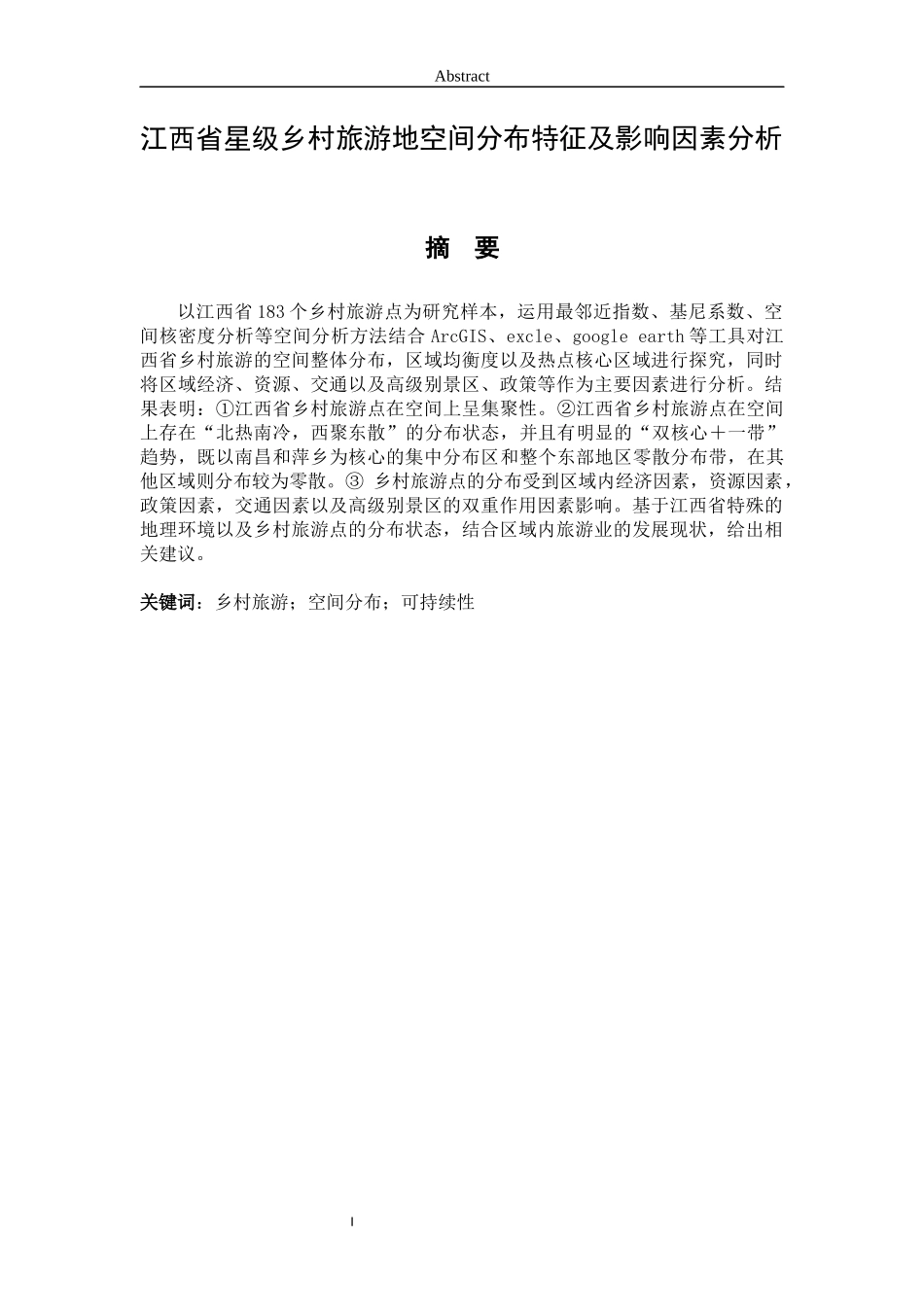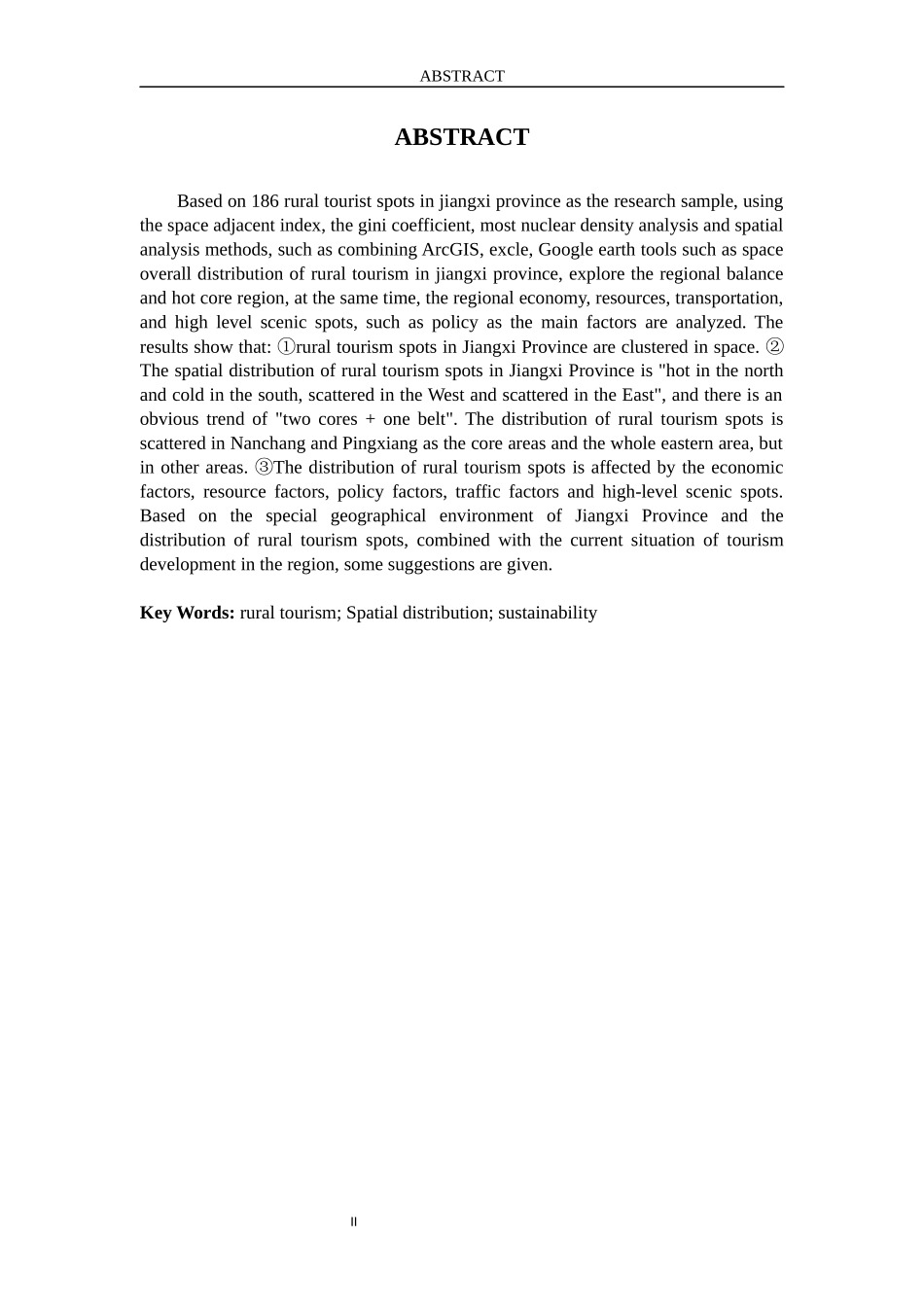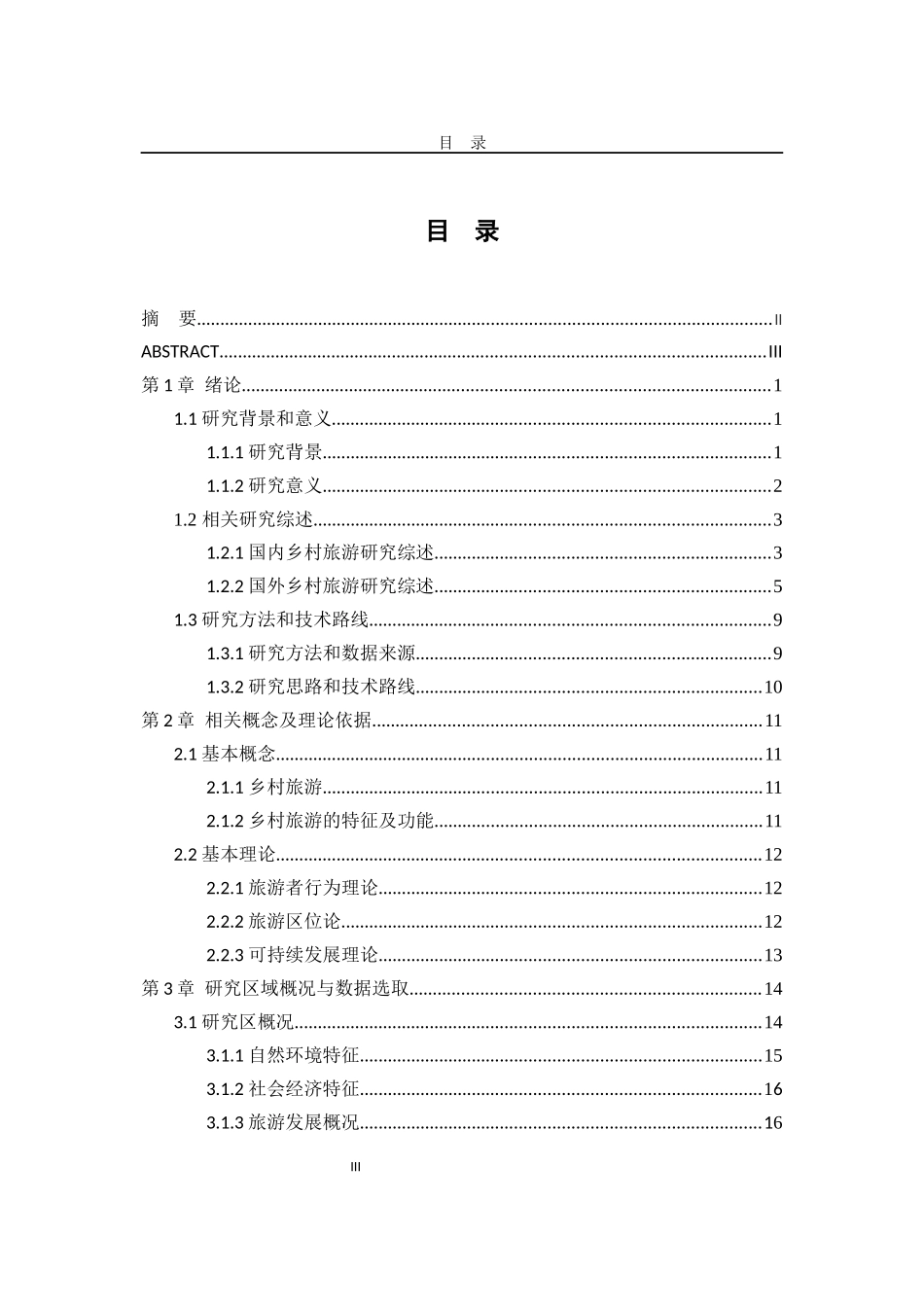IAbstract江西省星级乡村旅游地空间分布特征及影响因素分析摘 要以江西省 183 个乡村旅游点为研究样本,运用最邻近指数、基尼系数、空间核密度分析等空间分析方法结合 ArcGIS、excle、google earth 等工具对江西省乡村旅游的空间整体分布,区域均衡度以及热点核心区域进行探究,同时将区域经济、资源、交通以及高级别景区、政策等作为主要因素进行分析。结果表明:①江西省乡村旅游点在空间上呈集聚性。②江西省乡村旅游点在空间上存在“北热南冷,西聚东散”的分布状态,并且有明显的“双核心+一带”趋势,既以南昌和萍乡为核心的集中分布区和整个东部地区零散分布带,在其他区域则分布较为零散。③ 乡村旅游点的分布受到区域内经济因素,资源因素,政策因素,交通因素以及高级别景区的双重作用因素影响。基于江西省特殊的地理环境以及乡村旅游点的分布状态,结合区域内旅游业的发展现状,给出相关建议。 关键词:乡村旅游;空间分布;可持续性IIABSTRACTABSTRACTBased on 186 rural tourist spots in jiangxi province as the research sample, using the space adjacent index, the gini coefficient, most nuclear density analysis and spatial analysis methods, such as combining ArcGIS, excle, Google earth tools such as space overall distribution of rural tourism in jiangxi province, explore the regional balance and hot core region, at the same time, the regional economy, resources, transportation, and high level scenic spots, such as policy as the main factors are analyzed. The results show that: ①rural tourism spots in Jiangxi Province are clustered in space. ② The spatial distribution of rural tourism spots in Jiangxi Province is "hot in the north and cold in the south, scattered in the West and scattered in the East", and there is an obvious trend of "two cores + one belt". The distribution of rural tourism spots is scattered in Nanchang and Pingxiang as the core areas and the whole eastern area, but in other areas. The distribution of rural tourism spots is affected...












